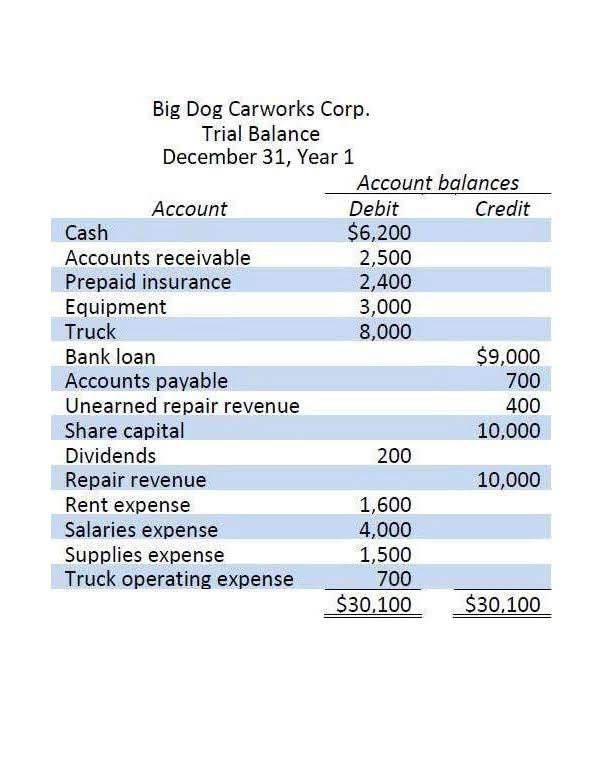
So we’re going to do this for the income statement and the balance sheet. So let’s see what the base amount is going to be for each of those statements. Vertical analysis, also known as common-size analysis, is a technique used to assess the relative proportions of different line items within a financial statement. This allows for meaningful comparisons and identification of trends over time or across companies. Vertical analysis is the proportional analysis of a financial statement, where each line item on a financial statement is listed as a percentage of another item.
- Vertical analysis can be used to compare and identify trends within a company from year to year (intracompany) or between different companies (intercompany).
- Conversely, a consistent or decreasing percentage in these expenses could indicate effective cost management.
- Whatever the top line is on your income statement, that’s what we’re using as our base.
- Remember, we’re going to have a different base amount on the balance sheet.
- The key differences arise from the way both these analysis methods are used.
Comparative balance sheet with vertical analysis:
As you can see, each account is referenced in proportion to the total revenue.

Vertical Analysis: What It Is, How It Works, and Key Examples
This information can be used to revised budgeted funding levels in future periods. Given below is an example, where we have the income statement of a company (in US dollars). We can gather from the data below that the sales of the company increased consistently from year 1 to year 3. However, while sales rose consistently from year 1 to 3, net income dropped markedly in year 3 so we would like to look into this in more detail. When looking at the financial statements of your business, it can get quite confusing due to the different figures used. We’re left with our income before taxes at this point, and we just do our 8000 divided by the net sales and it tells us that income before taxes is 13.8 percent of net sales.

Gather Data

Vertical analysis examines financial statements to assess the proportional significance of different line items. This method is applied to the income statement, balance sheet, and cash flow statement, each of which provides unique insights into a company’s retained earnings financial performance and position. To embark on vertical analysis, begin by selecting the financial statement you wish to analyze, such as the income statement or balance sheet. The choice of the base figure is crucial; for an income statement, total sales often serve as the base, while for a balance sheet, total assets or total liabilities and equity are commonly used. This base figure will act as the denominator for all other line items, transforming raw numbers into meaningful percentages. Vertical analysis helps stakeholders understand the relative proportions of accounts and performance in relation to each other.

By standardizing financial data into percentages, vertical analysis enables comparisons between companies of different sizes within the same industry. This is particularly useful for investors and analysts who need to benchmark a company’s performance against its peers. For instance, if one company’s administrative expenses are 10% of sales while an industry average is 5%, this discrepancy can prompt further investigation into the company’s cost management practices. Vertical analysis is a fundamental tool in financial statement analysis, offering a way to evaluate the relative size of each line item within a single period. By expressing each component as a percentage of a base figure—such as total assets or sales—it provides insights into the structure and efficiency of an organization.
- This helps to determine whether a company’s performance has been improving or declining over time due to various factors, such as competitive pressure and new product launches.
- The choice of the base figure is crucial; for an income statement, total sales often serve as the base, while for a balance sheet, total assets or total liabilities and equity are commonly used.
- Alright, so let’s run through 2017 and do our income statement vertical analysis.
- We must also consider that there may be another factor responsible for the significant rise in total sales in year 3 – such as a robust economy driving significantly higher sales in this year.
- We’re going to have other expenses and we’re going to end up with our net income.
All individual assets (or groups of assets if condensed form balance sheet is used) are shown as a percentage of total assets. The current liabilities, long term debts and equities are shown as a percentage of the total liabilities and stockholders’ equity. A vertical analysis of financial statements often reports the percentage of each line item to a total amount. Vertical analysis can be used to compare and identify trends within a company from year to year (intracompany) or between different companies (intercompany). Horizontal analysis, also known as trend analysis, compares historical data on a financial statement over different accounting periods. There is a baseline period and numbers from succeeding periods are calculated as a percentage of the base period.
Vertical Analysis for Balance Sheets
Expressing these figures as percentages allows for performance comparisons across time periods and with industry benchmarks. Vertical analysis is important because it provides a way to compare financial statements of different-sized companies or different periods within the same company. By expressing each line item as a percentage of a base amount, it standardizes the data, making it easier to identify trends and make comparisons.

They often are used to compare one company to another or to compare a company to other standards, such as industry averages. We can discern through vertical analysis that the main problem area vis-à-vis the decline in net income in year 3 is the cost of goods sold. This rose sharply to 52% of sales in year https://www.bookstime.com/ 3 (from 41% and 44% in year 2 and year 1 respectively).
- The common-size income statements for Jonick Corporation and Schneider Corporation show that Schneider has lower gross profit and net income from operations percentages to sales.
- We discussed how to interpret the results, considered limitations, and highlighted practical applications.
- Vertical analysis differs from horizontal analysis in that it focuses on the relationship of each line item to a base amount within a single financial statement, expressed as a percentage.
- The creation of common-size financial statements is not compulsory.
- Another advanced method involves integrating vertical analysis with ratio analysis.
- For example, the amount of cash reported on the balance sheet on Dec. 31 of 2024, 2023, 2022, 2021, and 2020 will be expressed as a percentage of the Dec. 31, 2020, amount.
- We’ll dive into the methodology of vertical analysis and walk you through the step-by-step process of conducting a vertical analysis.
Despite several advantages, vertical analysis comes with some disadvantages too. We can compare both these figures to analyze its net profit margin ratio. Reported a gross revenue figure of $117,929 million for the year ended 2021. Then, analysts can establish whether the financial metrics improved vertical analysis from the previous periods or not. We must also consider that there may be another factor responsible for the significant rise in total sales in year 3 – such as a robust economy driving significantly higher sales in this year.
